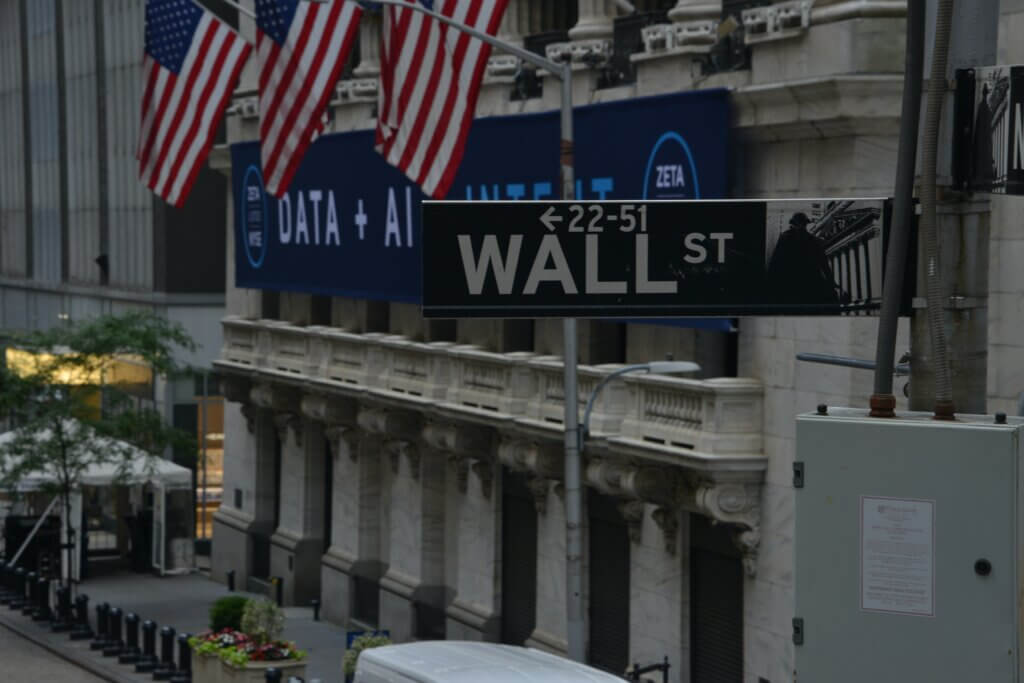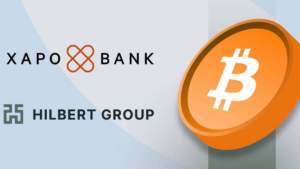The importance of seven shares
7 or 493 shares, where is the significance of seven shares in the S&P500? So far in 2023, only 7 stocks have generated most of the returns of all 500 stocks in the S&P 500. This year has been extreme, but it is still part of a long-term trend. Some of the developments are also reminiscent of the run-up to the dot.com bubble in 2000, which is a bit annoying.
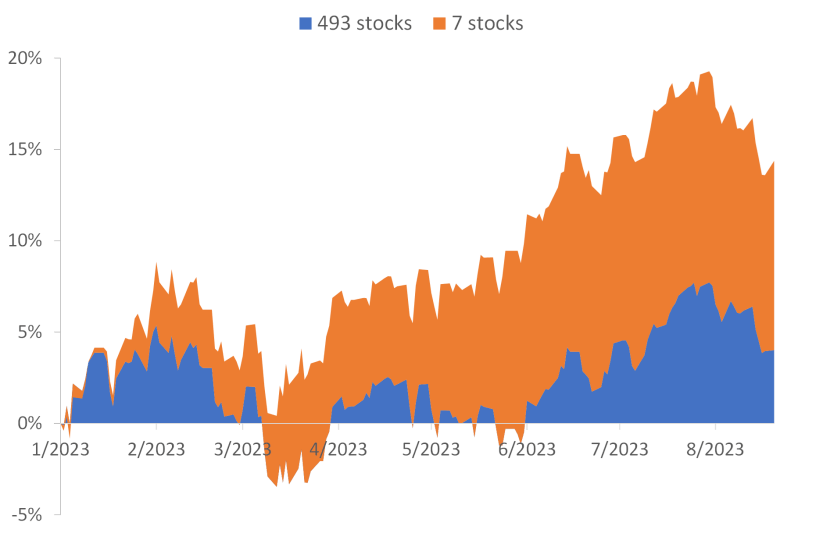 So far in 2023, only 7 S&P 500 stockshave generated more than 70% of the returns of the world’s leading stock market index, the S&P500. The other 493 shares generated the much smaller remainder. A market that is so heavily dependent on the performance of so few stocks is a fragile market. It is also a market that raises fears of bubbles and has implications for stock selection. This analysis is the first of two on these topics. The next analysis will compare the situation today with the situation before the dot.com bubble burst in 2000.
So far in 2023, only 7 S&P 500 stockshave generated more than 70% of the returns of the world’s leading stock market index, the S&P500. The other 493 shares generated the much smaller remainder. A market that is so heavily dependent on the performance of so few stocks is a fragile market. It is also a market that raises fears of bubbles and has implications for stock selection. This analysis is the first of two on these topics. The next analysis will compare the situation today with the situation before the dot.com bubble burst in 2000.
In early 2023, the market value of all stocks included in the S&P 500 was $32.1 trillion. At the end of August, the market value was $37.1 trillion. So the value of all stocks in the S&P 500 has increased by 15.3% by 2023. This is a good return for eight months.
The S&P 500 consists of the largest and most traded stocks in the US. It is the world’s leading stock market index. It is therefore important to understand what drives it, not least to assess the robustness/fragility of its performance.
We look at the performance of stocks referred to by some as the ‘Magnificent Seven’, Alphabet, Amazon, Apple, Meta, Microsoft, Nvidia and Tesla.
Let’s look at the performance of these seven stocks relative to the performance of the other 493 stocks in the S&P 500. Most of the performance of the overall market, i.e. all 500 stocks in the S&P 500, comes from the performance of these seven stocks, not from the performance of the other 493. Here are some key figures:
– The combined market value of all 500 stocks in the S&P 500 has increased by 5 trillion dollars or 15.3% in 2023, as mentioned.
– Leaving Mag7 out of the equation, the value of the remaining 493 shares has risen from $26 trillion to $27 trillion today, a return of only 4.5%.
– Consequently, Mag7 shares have produced a 10.8 percent increase in the S&P 500.
– This means that only 7 out of 500 stocks generated 10.8%/15.3% = 71% of the return on the S&P 500 in 2023. The remaining 493 shares delivered the remaining 29 percent.
This was a rally driven by very few stocks – not a broad rally.
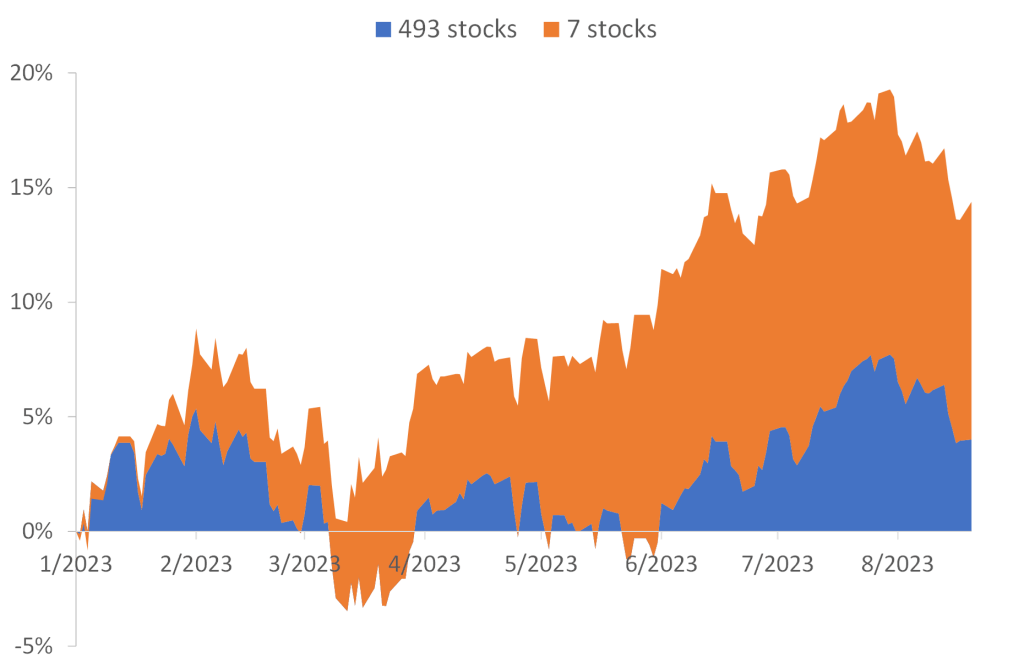 Figure 1. Cumulative return (percentage change in total market value) for all companies in the S&P 500, split between the return on Mag7 and the remaining 493 stocks, since January 1, 2023.
Figure 1. Cumulative return (percentage change in total market value) for all companies in the S&P 500, split between the return on Mag7 and the remaining 493 stocks, since January 1, 2023.
Source: Datastream
There is another way to illustrate the importance of Mag7 for the development of the overall market. Figure 2 shows how the total value of Mag7 shares has evolved in 2023, and how the value of the other 493 shares has evolved, normalized to the value at the beginning of the year.
It has been a strong year for Mag7 shares. Together they have risen by 60% by 2023. The value of the other 493 shares has only increased by 4.5%.
The last ten years
Although the trend in 2023 is extreme, it is part of a long-term trend. Since 2013, the total value of all companies in the S&P 500 has increased by 191% from $12.7 trillion to the aforementioned $37 trillion today. Excluding Mag7, the cumulative gain of the remaining 493 stocks is 130 percent, meaning Mag7 has contributed to a 61 percent gain in the S&P 500 over the past decade. So since 2013, about a third of the growth in the total value of all companies in the S&P 500 has been due to the growth of seven stocks, Mag7.
This of course gives Mag7 more weight in the index. In early 2013, the total value of Mag7 shares accounted for 8.4% of the total value of all 500 stocks in the S&P 500. Today, these seven shares account for 27.5 percent.
On January 1, 2013, Mag7 represented 8.4% of the S&P 500. Over the next 5-6 years, Mag7 stocks consistently rose faster than the other 493 stocks, and their share in the index increased steadily. Then there was a sharp rise. In fall 2019, Mag7 shares accounted for 16% of the total value of all 500 companies in the S&P 500. By early March 2020, just before the lockdown, this share had risen to 20%, a significant increase. In the early stages of the pandemic, Mag7 continued its sprint. On September 1, 2020, for example, Mag7 had a 27.4% share of the index.
2022 was a bad year for all stocks, but especially for Mag7: What goes up fast, goes down fast. From March 2022 to January 2023, Mag7 shares lost 36 percent. The other 493 shares lost “only” 17 percent. Now, in 2023, this has reversed, with Mag7 performing spectacularly compared to the rest of the market. It is clear that Mag7 has had a wonderful performance, but it is equally clear that it has been a very volatile performance.
Mag7 shares
Although the returns on all seven Mag7 stocks were excellent, with a return of more than 30% in 2023, Nvidia’s performance was in a class of its own. Nvidia’s market value has increased by almost 250% since the beginning of the year. At the beginning of the year, Nvidia accounted for 1% of the total value of all 500 stocks in the index. Today, the single share accounts for more than 3 percent.
Nvidia’s market value has increased 150 times since 2013. The market value of the total index has increased less than times, the total index has risen by 191%.
Stockpicking
While the developments described above are interesting in themselves, they also have important implications for the debate between active and passive investments. The debate can be seen from two angles.
On the one hand, the fact that seven stocks out of 500 stocks were so important for the return of the whole market indicates that it is difficult to choose the right stocks in advance. It’s easy to identify these stocks today, ex post, but as an investor you naturally want to find them before they take off, and before everyone else does. But how are you going to find those few stocks among the 500 stocks out there? There is a real risk that you will not find the needle in the haystack, that you will not be able to identify the winners in advance.
On the other hand, the fact that the market was driven by the performance of these few stocks means that the potential returns from stockpicking (active investment) are huge. If – and this IF is at the heart of the debate – you can find the winners a priori, the payoff is fantastic. Successful stockpickers, that is, investors who focused their investments on Mag7, had a good run.
A bubble?
Second, the spectacular outperformance of these few stocks is reminiscent of the dot.com bubble at the turn of the millennium. Then as now, a lot of hype was made about some individual stocks that rose spectacularly in a very short time. The problem, of course, was that it was a bubble. Some of the stocks that rose so dramatically then crashed completely.
Take Cisco as an example. Cisco’s market value at the beginning of 1998 was $57 billion. At its peak in September 2000, it had risen to $482 billion, almost tenfold. And that was in just 2.5 years. Then the bubble burst. Six months later, in spring 2021, Cisco had lost 80 percent of its value and was “only” worth $80 billion. The question is whether market trends are the same today as then.
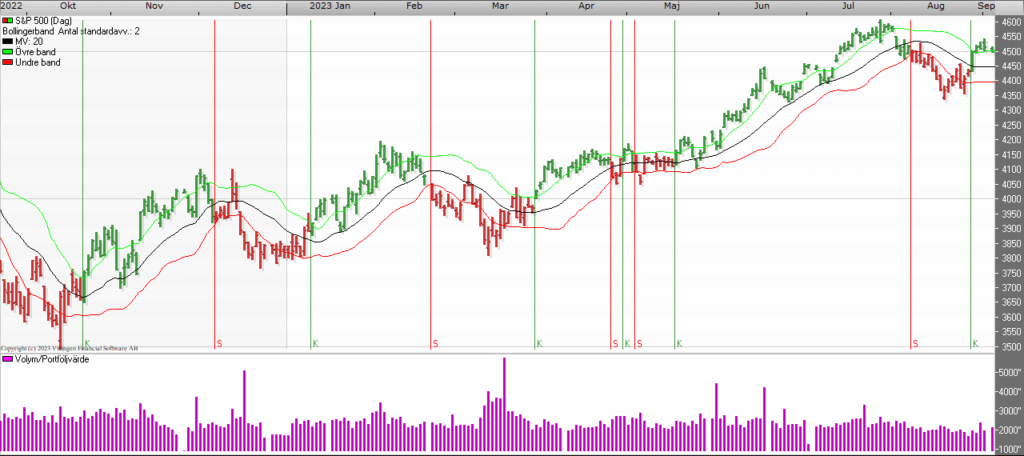 Source: Vikingen.se
Source: Vikingen.se
About the Viking
With Viking’s signals, you have a good chance of finding the winners and selling in time. There are many securities. With Viking’s autopilots, price data, tables and stock prices, you can sort out the most interesting ETFs, shares, options, warrants, funds, etc.
Click here to see what Vikingen offers: Detailed comparison – Stock market program for those who want to become even richer (vikingen.se)
